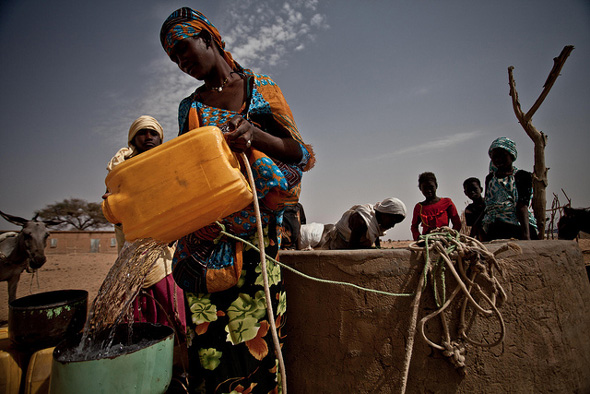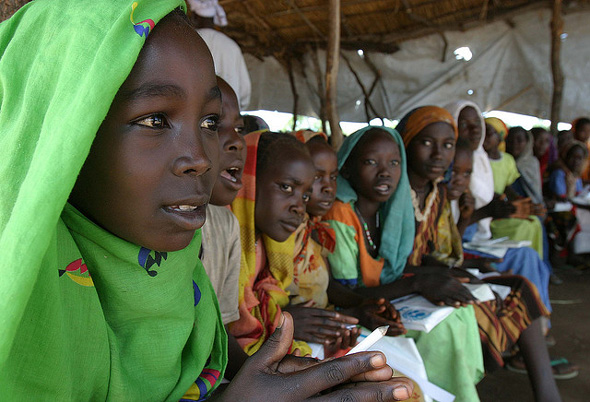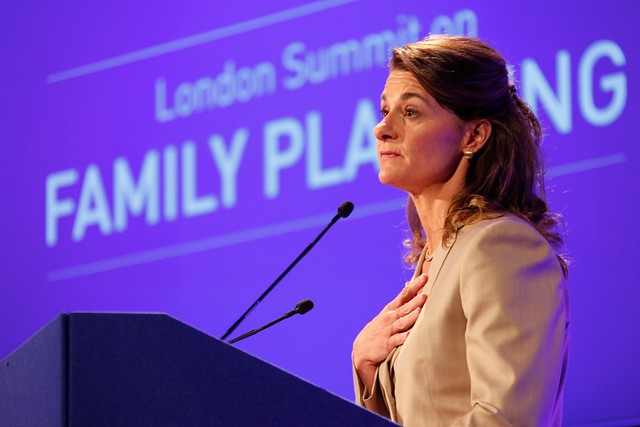-
From Dirty Wells to Endocrine Disrupters: Covering Women, Water, and Health at SEJ 2012
›Access to safe water is often taken for granted in developed countries. But last week at the 22nd annual conference of the Society of Environmental Journalists, panelists argued that the impact of dirty water on women’s health is an important but neglected story, not only in developing countries like Nigeria, but also in the United States.
-
Youth Bulge, Public Policy, and Peace in Pakistan
›October 26, 2012 // By Payal Chandiramani
While Pakistan’s demographic challenges are perhaps well known – two-thirds of the population of 180 million is under 30 years old – increasing security concerns have prompted discussions about exactly how much the country’s youthfulness is affecting its prospects for peace. On October 10, the U.S. Institute of Peace and George Mason University’s School of Public Policy hosted a day-long conference on “Youth Bulge, Public Policy, and Peace in Pakistan” to tackle this question.
-
Kathleen Mogelgaard on How Malawi Shows the Importance of Considering Population, Food, and Climate Together
›October 24, 2012 // By Carolyn LamereQuantifying the role population plays in food security is “an incredibly powerful piece of information,” said Kathleen Mogelgaard in an interview with ECSP. Malawi is a case in point.
Mogelgaard saw the connections between food, population, and climate change firsthand on a recent trip to the southeast African country, whose population of 15 million is largely dependent on subsistence, rain-fed agriculture. “One in five children in Malawi is currently undernourished,” Mogelgaard said, and climate change paints a bleak picture for the future.
-
Population and Environment in Saadani National Park, and Repositioning Family Planning in Sub-Saharan Africa
›Tanzania’s Saadani National Park is a hotbed of biodiversity and, like other national parks in the region, it’s surrounded by human activity. A report by the BALANCED Project, “Population, Health, Environment Situational Analysis for the Saadani National Park Area, Tanzania,” provides a snapshot of the population, health, and environment situation inside the park to serve as a baseline for future activities of the Tanzania Coastal Management Partnership (TCMP) – a joint initiative of the government of Tanzania, USAID, and the University of Rhode Island’s Coastal Resources Center. A behavioral monitoring system implemented in June 2009 used surveys that reached a total of 437 respondents (54 percent women) from eight villages to analyze the “behaviors that positively and negatively influence the utilization and condition of natural resources.” The surveys found that arable land is scarce, fisheries are being depleted, and people have inadequate access to healthcare, water, sanitation, fuel, and family planning resources. The results suggest a strong case for expanding TCMP’s existing integrated approach – combining HIV/AIDS, conservation, and livelihoods goals – to include promotion of positive behavior changes, particularly as they relate to family planning and the effects of population growth on biodiversity loss and resource depletion.
-
Gwen Hopkins, Next Billion
Family Planning as an Investment? The Aspen Institute at the 2012 Social Capital Markets Conference
›October 16, 2012 // By Wilson Center Staff
Two weeks ago, 1,600 venture capitalists, philanthropists, and entrepreneurs gathered at the 2012 Social Capital Markets Conference (SOCAP) to discuss the question at the heart of impact investing: How can investments do well while also doing good? Consistent with the in-depth nature of SOCAP, panels examined every aspect of capital flows, including how to structure a business, how to move an idea from a prototype to scale, and where to invest for maximum impact. The resulting conversations gave rise to multiple technical suggestions – and one paradigm shift. In order to do well and do good, multiple conference participants argued, investors must incorporate a gender lens into their portfolio.
-
Maintaining the Momentum: Highlights From the 2012 London Summit on Family Planning
›
This summer, 26 countries and private donors met at the London Summit on Family Planning to pledge $2.6 billion to expand family planning services to 120 million more women in the poorest countries around the world. But while the summit renewed focus on reproductive health with its ambitious target, “we’re now at that point where we have to really sit down and work through” how to achieve that goal, said Julia Bunting of the UK’s Department for International Development at the Wilson Center on September 17. [Video Below]
-
Kate Gilles and Marissa Pine Yeakey, Behind the Numbers
World Contraception Day
›
The original version of this article, by Kate Gilles and Marissa Pine Yeakey, appeared on the Population Reference Bureau’s Behind the Numbers blog.
World Contraception Day “centers around a vision for a world where every pregnancy is wanted,” with a goal of enabling “young people to make informed choices on their sexual and reproductive health.”
-
After the London Summit on Family Planning: What Happens Now?
›September 21, 2012 // By Carolyn LamerePeople are still talking about this summer’s London Summit on Family Planning, which was hosted by the Bill and Melinda Gates Foundation and the UK’s Department of International Development (DIFD) on July 11. On Monday here at the Wilson Center, the Environmental Change and Security Program featured representatives from USAID, DFID, and Gates Foundation for a standing-room only panel discussion of the landmark event.
Showing posts from category family planning.











